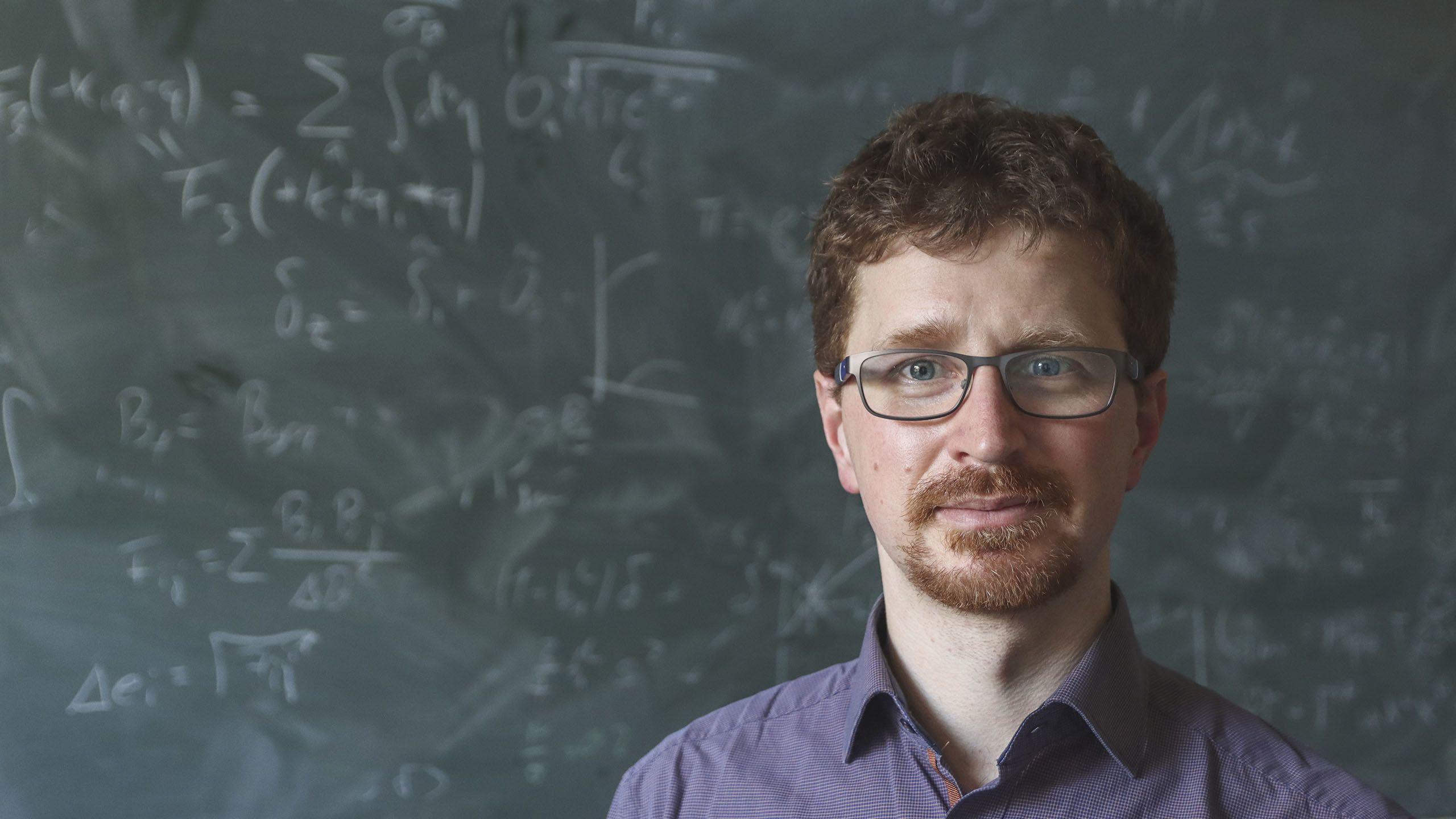This Cambridge Life
The cosmologist modelling the Universe with maths

Dr Tobias Baldauf likes nothing better than seeing an equation ‘cross reality’. His work is helping us to answer some of the remaining questions about the Universe.
My research is concerned with the history and composition of the Universe. But I study just one tiny piece of this complex puzzle. Through the use of mathematics and computational modelling, I describe how stuff – that is matter and galaxies – is distributed throughout the Universe.
This distribution is called the Large-Scale Structure (LSS). The maps we produce of the LSS look a bit like a sponge, with holes of nothingness within the matter. The map is really a pattern of threads that connect denser dots where you have accumulations of galaxies.
I build computational models to describe this distribution. I use a mixture of methods from theoretical physics, but I also design and run simulations on supercomputers. I enjoy the practical programming component of this work.
Large-Scale Structure simulation
Large-Scale Structure simulation
Hopefully through this research we can understand more about how these structures were created, shed some light on what makes the expansion of the Universe accelerate, and determine whether Einstein’s general relativity is the correct description of gravitational interactions.
Our modelling efforts are aimed at analysing ambitious astronomical surveys that map the galaxy distribution in the Universe. Over the past three decades, we have gained a lot of insights from observations of the Cosmic Microwave Background – an afterglow of the Big Bang that is providing us with a ‘baby’ picture of the Universe. But now we are trying to extract information from the LSS in the late-time Universe, which is more difficult to model because of its non-linear nature.
It’s amazing and beautiful how a mathematical theory is able to cross reality. I find it incredible that maths can be used to help us to understand something so vast and incomprehensible as the Universe. It’s almost unbelievable that you can simply sit down at your desk and work with these equations.
From the outside perspective, general relativity or matter distribution in the Universe might sound like extremely abstract and difficult concepts. But it’s like everything, once you’ve looked at something for long enough it becomes familiar and you develop an intuition for how to deal with it. It’s a craft that I wouldn’t say is any more difficult or admirable than someone building a beautiful wall with bricks.
I’ve always been interested in how things work, and this curiosity has never left me. Whether it’s the distribution of galaxies, aircraft or space rockets. When aerial photography began to be used in nature documentaries, I wanted to understand how the technology worked, so I ordered a kit and assembled my own drone on my kitchen table.
I first picked up a camera aged 16. I was trying to capture not just a snapshot of the world but aiming to convey some sort of emotion with the photograph. This is the sort of challenge I find very interesting.
Photography also complemented my love of nature. I think going out with the mindset of wanting to take pictures makes you more observant of the little things. It helps you to slow down and appreciate the world around you. Perhaps it’s the hoar frost on a cold winter morning, a sunset streaked with rosy-pinks, or the morning light in a lush, green forest.
But in the past 12 months, with successive lockdowns my photography has become more focused on life around the house. My housemate and I both enjoy cooking; beautiful cakes and dishes kept coming out of the kitchen that needed to be remembered. And so I had a new hobby: food photography.
During the first lockdown it felt in a way that the world started to spin a little slower for a while. To some extent I think I appreciated that. I think it stopped people from whizzing about so frantically and helped some people to focus more on the here and now.
Obviously, the lockdown also caused serious economical and mental health problems – I encounter the consequences of these in my role as a Graduate Tutor at Clare Hall. The College is doing a lot to support students during this difficult time, starting with Tutors like myself talking to the students about the problems they are facing. There is also College-based counselling available and financial help to support those going through economic hardship.
The last year has also shown us how fragile humanity can be. Our progress in science and technology has solved many problems but is also creating new ones – the quick spread of the pandemic being a result of our fast-paced, globalised world. I think it’s important to appreciate how precious life, our planet, and the Universe are, and to ensure that science and technology are employed in a way that is sustainable for our planet and humanity.
Dr Tobias Baldauf is a Stephen Hawking Advanced Fellow at the Department of Applied Mathematics and Theoretical Physics and a Graduate Tutor at Clare Hall.
This profile is part of This Cambridge Life – stories from the people that make Cambridge University unique.
Words: Charis Goodyear. Photography: Tobias Baldauf.





















